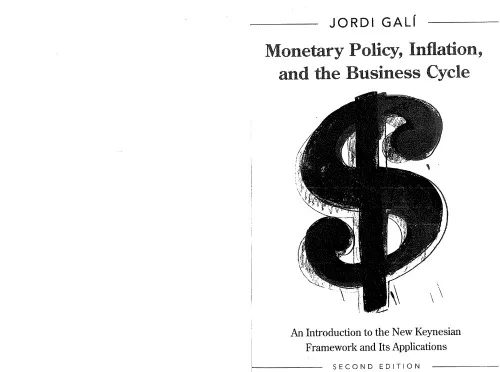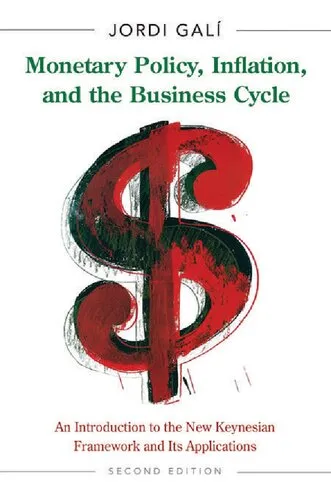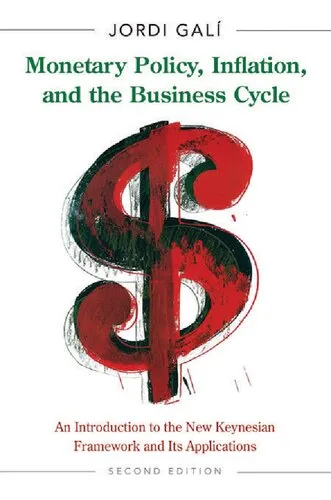Monetary Policy, Inflation, and the Business Cycle: An Introduction to the New Keynesian Framework
4.5
Reviews from our users

You Can Ask your questions from this book's AI after Login
Each download or ask from book AI costs 2 points. To earn more free points, please visit the Points Guide Page and complete some valuable actions.کتاب های مرتبط:
Introduction to New Keynesian Economics
Welcome to a comprehensive exploration of the New Keynesian framework through the lens of the book "Monetary Policy, Inflation, and the Business Cycle: An Introduction to the New Keynesian Framework." This work stands as a foundational text that synthesizes theoretical insights and empirical findings to provide a cohesive understanding of monetary policy and its intersection with inflation and economic cycles.
Detailed Summary of the Book
"Monetary Policy, Inflation, and the Business Cycle" offers a clear and accessible introduction to the primary features of the New Keynesian model—a framework that integrates price and wage rigidities into macroeconomic analysis. This book sets out to demystify complex economic concepts such as dynamics of inflation and output under various monetary policy rules. The text discusses how these models illuminate the mechanisms of price setting, providing insights into optimal policy design and implementation. Importantly, it addresses both theoretical constructs and practical applications, making it an invaluable resource for those aiming to understand contemporary macroeconomic policy challenges.
Central to the book is the systematic examination of the dynamic stochastic general equilibrium (DSGE) models, with particular attention to their implications for monetary policy. Through a careful calibration and estimation approach, readers are introduced to the quantitative dimensions of the New Keynesian framework, offering a bridge between theoretical abstraction and real-world policy making.
Key Takeaways
- The role of nominal rigidities in shaping economic dynamics.
- An understanding of the policy implications of the output-inflation trade-offs.
- Insights into how central banks can use interest rate rules to stabilize the economy.
- The importance of expectations in formulating and implementing successful monetary policies.
Famous Quotes from the Book
"Economic policy must account for not only the immediate impacts but also the dynamic expectations of future conditions."
"Price stability is not merely an objective; it is a precondition for sustainable economic growth."
Why This Book Matters
In the evolving landscape of global economies, understanding the insights offered by New Keynesian economics is crucial. This book is not just a theoretical text; it serves as a practical handbook for policymakers, economists, and students alike. By bridging the gap between classic Keynesian approaches and modern economic realities, it equips readers with the tools to critically analyze and interpret the effects of monetary policy decisions.
As our world faces new economic challenges, from financial crises to unexpected economic shocks, the principles outlined in this book become even more relevant. They offer a guiding framework to understand how inflation dynamics and business cycles interact with policy interventions, enhancing our ability to foster economic stability and growth.
Free Direct Download
You Can Download this book after Login
Accessing books through legal platforms and public libraries not only supports the rights of authors and publishers but also contributes to the sustainability of reading culture. Before downloading, please take a moment to consider these options.
Find this book on other platforms:
WorldCat helps you find books in libraries worldwide.
See ratings, reviews, and discussions on Goodreads.
Find and buy rare or used books on AbeBooks.
1374
بازدید4.5
امتیاز0
نظر98%
رضایتReviews:
4.5
Based on 0 users review
Questions & Answers
Ask questions about this book or help others by answering
No questions yet. Be the first to ask!















